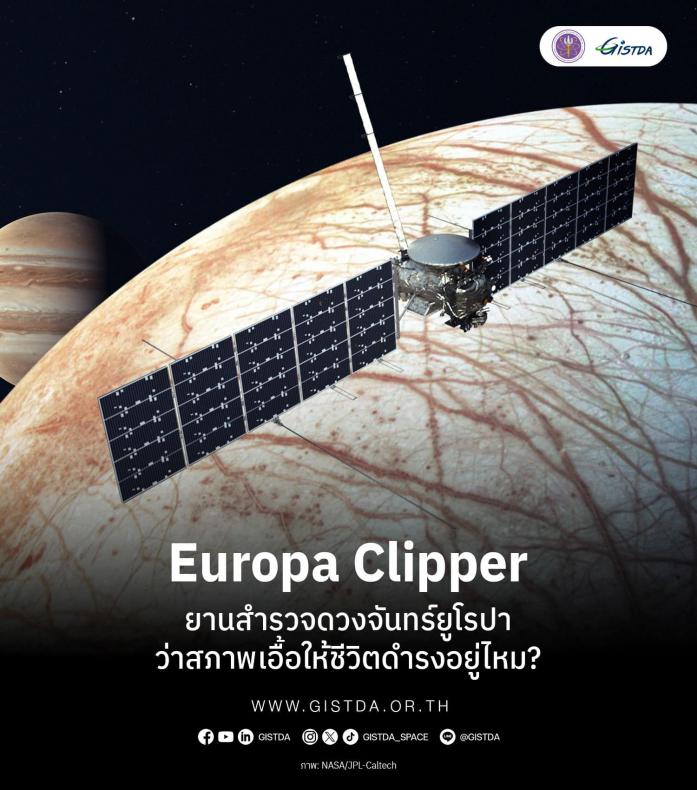This October, Europa Clipper will begin its journey to explore Europa. With a mission to determine whether Jupiter's icy Moon has conditions suitable to harbor life beneath its icy crust.
Are we alone in the Universe? Humanity has been seeking answers for many generations. Scientists have been searching thousands of planets in orbit around other stars, hoping to find a rocky planet like our own in one day. The same applies to natural satellites in the Solar System, for example, Europa and Enceladus, where scientists are almost certain a vast ocean lies beneath its icy shell, which could be suitable for life.
Europa, along with Io, Ganymede, and Callisto, was discovered by Galileo in 1610. The Galilean moons were the first Solar System objects to be found by telescope, and the very first that orbit around another planet.
Scientists describe Europa as an "ocean world" meaning that data from multiple spacecraft and instruments suggest that this natural satellite contains liquid saltwater ocean beneath its icy surface. Europa's oceans are thought to be much deeper than the ones on Earth and potentially contain twice as much volume of water. Moreover, Europa might have the essential building blocks for life, and energy for life to sustain from Jupiter's strong gravity and magnetic field.
Europa Clipper will begin its journey atop SpaceX's Falcon Heavy rocket on October 10, 2024. Then it will make a close approach to Mars in February 2025, and Earth flyby in December 2026, to take advantage of both planet's gravity influence and boost its velocity towards Jupiter. The mission is expected to reach orbit around this gas giant on April 11, 2030.
Once in orbit around Jupiter, the Europa Clipper will perform multiple close flyby of Jupiter's moon, to adjust its orbit to the desired resonance with Europa’s orbit. Then the first science campaign will commence in May 2031, with the possibility of performing the closest approach of 25 kilometers from Europa's surface.
Despite the name, Europa Clipper will not be in orbit around Europa, due to the strong radiation from Jupiter in Europa's orbit, which could damage electronics and instruments on board. The resonance orbit of the spacecraft will allow Europa Clipper to perform about 50 flybys of Europa, ensuring an almost complete high-resolution detailed exploration of the entire moon.
There are 9 scientific instruments installed on Europa Clipper. These include multiple cameras and spectrometers to explore Europa's surface in high-resolution detail. A radar to search for lakes beneath the icy crust. A magnetometer and plasma instrument to explore Europa's magnetic field. Europa Clipper will also be able to perform a detailed analysis of gasses and tiny particle composition at Europa.
With a distance of 780 million kilometers away from the Sun, more than five times as far from the Sun as Earth. Europa Clipper requires giant solar arrays to collect enough light for its power in the orbit around Jupiter. The spacecraft spans more than 30.5 meters when the solar array is deployed, making this the largest planetary mission spacecraft ever developed by NASA.
Following NASA's tradition of sending inspirational messages into space, the Europa Clipper will include a 'Golden Record' of waveforms of the word "water" spoken in 103 languages around the world, etched into the metal tantalum plate that protects the mission's electronics. The poem "In Praise of Mystery: A Poem for Europa” was written by U.S. Poet Laureate Ada Limón, along with a microchip of 2.6 million names submitted by the public, will also be joining the journey abroad on the Europa Clipper's plate.
While the Europa Clipper will not be hunting for alien life on Europa, it will search and investigate whether the moon could have conditions that harbor life beneath its surface. This makes Europa Clipper one of the most anticipated missions of the decade and could be one of humanity's first attempts to find the answer to whether we are alone in the Universe.
